Greetings from Honduras! It has been a great week of new and exciting experiences that have given me vision for my life and future career. One of the eye-opening experiences from this week was on Thursday when I had the opportunity to spend a day at the public hospital of Roatan. As I mentioned in an earlier post, I met a pediatric emergency medicine physician at church on Sunday named Dr. Eric Scher who traveled to Roatan to work at the public hospital and teach the young Honduran physicians who work there. Through our conversation at church he found out I was going into Emergency Medicine so he invited me to come and work with him at the public hospital. I was very excited for this opportunity because I knew that the public hospital had an emergency room and saw many sick patients. Little did I know what adventures the Lord had in store.

To preface my story I want to explain a little bit about how the hospital system is run in Honduras and in Roatan specifically. Honduras has a government-sponsored public health care system that serves all of its citizens freely without regard to social status. However, because these public hospitals are funded by the government and serve many poor patients, they typically have little resources and many patients to care for. In Roatan there are two hospitals on the Island, one public hospital funded by the government and one private hospital that is much nicer and is funded through revenue from wealthier citizens or tourists who use its services. Many of people of Roatan cannot afford the private hospital so they have to go to the public hospital for their healthcare needs.
When I first arrived at the public hospital with Dr. Scher, I was immediately surprised by how it was set up. It was an open air building in the middle of town with a concrete roof and occasional doors to separate certain healthcare areas such as the ER or pediatric unit. Dr. Eric walked me around to see the different areas and then we went to the pediatric unit to check up on some of the patients he had been seeing. He was adored by all of the pediatric unit staff because he had a made it a focus to make relationships with all of the staff including the nurses and administrative workers. I helped Dr. Scher and the staff carry in some supplies that Dr. Scher had bought for the hospital. I thought these supplies might be some new technologic gadgets that would help speed up patient care but instead it was two paper towel dispensers and two soap dispensers for two areas where there was actually running water (a good part of the hospital is without a source of running water). Before these were installed, hospital staff would only have hand sanitizer for hand sanitization if it was available. These dispensers allowed staff to better cleanse their hands between patients and prevent spread of disease. It was a simple thing but it made a big difference for the hospital staff and patients.
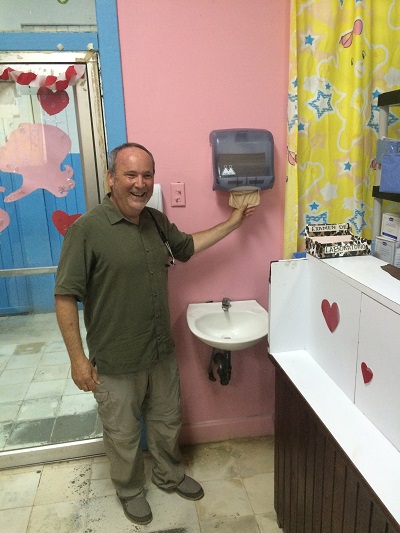
The first place we saw patients was the pediatric unit which included a small NICU. In the NICU, it was interesting to see how the staff took care of these tiny babies with limited resources. For instance, in the US, all of these babies would be hooked up to cardiorespiratory monitors and most likely would have 1 or 2 nurses watching over them. In the NICU in the public hospital, they only had a few monitors so they had to decide which babies needed it the most and then try to take care of the rest without monitors. The babies were watched by an administrative non-medical staff member on the pediatric unit most of the time who could see the babies through a glass partition. Doctors and nurses would stop by at various times throughout the day. It was very interesting to see how they handled newborn care with limited resources.
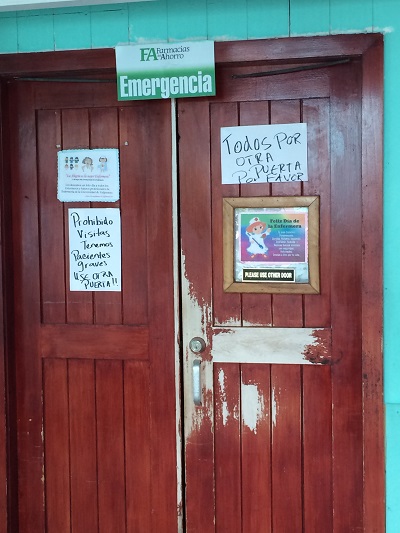
After seeing all the patients in the pediatric ward, I had the opportunity to stay in the ER of the public hospital for about an hour and a half. It was crazy how many sick patients I saw in that short period of time. First I saw a patient who was involved in a motorcycle accident and had a lower extremity deformity where one leg was shorter than the other and his injured leg was turned funny. The Honduran doctors got an X-ray because they thought his femur (leg bone) was broken. As I looked at the X-ray with the young Honduran doctors who had just recently started the practical part of their training, they said the femur was not broken. I looked closer and noticed that although the femur was not broken, it was not in the right place. I pointed out that the patient had a dislocated hip to which the Honduran doctors said…..”Oh I see it now you’re right.” We took the X-ray to the orthopedic surgeon on call who agreed the hip was dislocated and told the Honduran doctor in the ER to get some diazepam ready to put the hip back into place. Diazepam (valium) is not the usual drug I think of when doing a major procedure such as a hip relocation because it isn’t a very strong anesthetic. I asked the orthopedic surgeon about it and his reply surprised me. He said he would prefer to relocate it in the operating room but there is only one operating room in the hospital and it would take too much time to get it set up. Then he said they could use stronger drugs but that would require an anesthesiologist which there is only one in the hospital so it would take a long time for her to get involved. So due to limited resources and personnel, we were stuck with IV diazepam and brute force. The orthopedic surgeon graciously let me help put the bone back into place. We gave the patient the sedation and I help pressure on the patient’s pelvis over the injured side while the Honduran ER doc held pressure on the other side of the pelvis. The orthopedic surgeon applied traction to loosen up the muscles and then gave a swift pull on the bone. The hip bone popped right back into place right under my hands! I said praise the Lord because it could have been much worse and the patient tolerated it well.
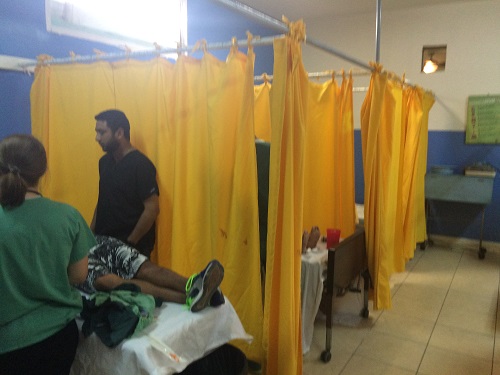
The next patient I saw was a patient that came in with shortness of breath, a history of heart failure and asthma, and swelling in her legs up to her knees. Her oxygen saturation was 85% on 4 liters of oxygen which for non-medical people means she was not getting good oxygen to her body. She had wheezes in her lungs so we started a breathing treatment for her asthma. We tried to get a blood pressure but we had trouble hearing the sounds. I felt her pulse and it was weak so I wondered if the blood pressure was low. We got an EKG and spoke with internist on call who agreed to come see her. He took the blood pressure and then turned to us and said, “this patient is in cardiogenic shock” (meaning her heart wasn’t strong enough to pump blood to her body). We quickly rushed to a small closet-shaped room which was the pharmacy to get medications to help with her blood pressure. The patient was very sick and near death but we were able to intervene and preserve her life.
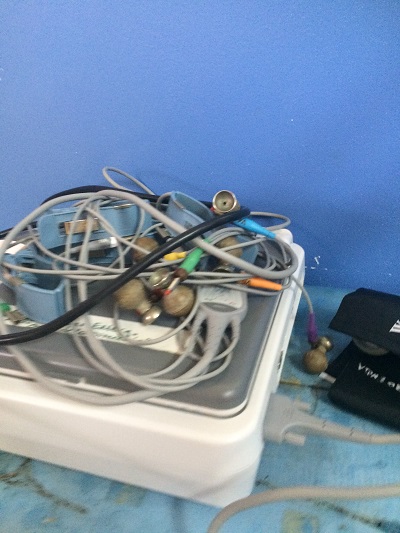
The last patient I saw was one of the sickest patients I have ever seen and he had a sad story. The patient had been diving to 70 meters (over 200 feet) to fish for lobster for a commercial fishing company. The boat accidentally started to drive away with a hose that was attached to the patient. The hose yanked the patient up towards the surface very quickly which is not safe when someone is diving at this depth. When the patient reached the surface, he had a severe case of the bends which is also called decompression illness. When we saw him in the hospital, he was paralyzed from the neck down unable to move his arms or legs due to damage to his brain and spinal cord. The only treatment for this condition is to get the patient into a hyperbaric chamber. Unfortunately the only hyperbaric chamber is for tourists who dive and it costs roughly $80 per treatment which is a lot of money in Honduras. Not only that but the patient was from one of the poorest people groups in Honduras and he was away from home without family. The boat owner should pay for the damages his negligence caused but unfortunately he went into hiding after the incident. There were a few guys at the hospital who claimed they were “a friend of a friend” who owned the boat (trying to distance themselves from liability) and they said they just wanted to help the guy out. However, their story about the events of the patient’s injury kept on changing and it became apparent they were lying to us. They had found a way to pay for several treatments at the tourist hyperbaric chamber but they didn’t want to pay for more. This patient needed at least 25-30 hyperbaric treatments to get his body function back which you can imagine would be very expensive.
We were confronted with a hard situation. This guy really needed the hyperbaric treatments but because he was poor, he did not have access to the treatment. The boat owner who had probably been taking advantage of this patient’s diving skills while paying him a small wage was now trying to avoid any liability. This situation really gave me perspective of what medical care can be like in the third world. It is sad what can happen when patients are poor and they don’t have anywhere to turn. We did not know what to do as we looked at the patient who seemed to be in distress and dying. Dr. Eric finally offered to pay for several of his hyperbaric treatments at the tourist hyperbaric chamber. We took him to the chamber only to get there to be told the patient was breathing too fast and needed a chest X-ray before he could be treated. So we had to ride in the back of the ambulance with him to the other side of the island to the private hospital to pay for a chest X-ray (because they are the only place on the island to get a chest X-ray after noon) to make sure he didn’t have a collapsed lung. As we drove with this poor man who could not communicate, I said to my fellow doctors “we need to pray for this man.” I led as we prayed in faith for a miracle for this man and for God to provide a way for him to be healed. The chest X-ray was normal so he went back to the public hospital to stay for the night to get the hyperbaric treatment in the morning. I went home heavy-hearted wishing there was more I could do for this man. I have no idea what will happen to him after he receives the few treatments Dr. Eric paid for. I am not sure what has happened since I saw him but I still pray the Lord will bring healing to his body and provide a way to pay for his care.
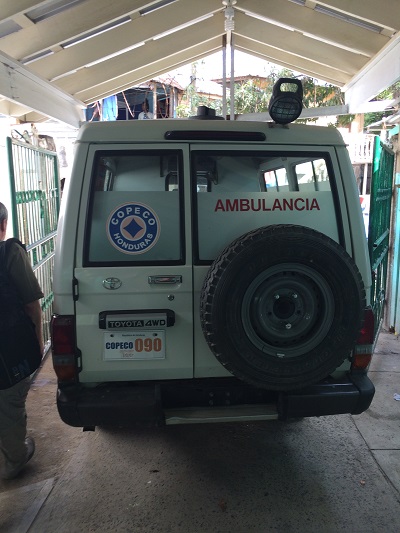
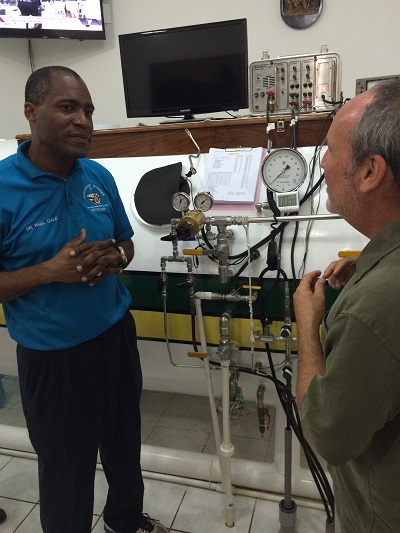
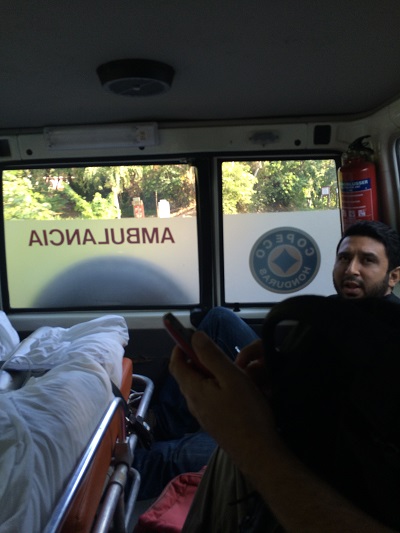
These experiences really opened my eyes to how blessed I am in the United States even with the broken health care system we have. We are blessed to have a safety net so that anyone can walk into the emergency room and receive care until their acute disease is resolved regardless of their financial resources. The day at the public hospital with Dr. Eric also showed me a model of mentorship and discipleship I want to implement in my future international medical service. Dr. Eric met with the young Honduran doctors every day to teach them what he knew and mentor them in their medical practice. He cared about each person and tried to know all their names so he could have a relationship with each one. He was able to have incredible influence on them because he cared about being their friend and colleague. He realized that when you do international service, it is not about what you do but about what you leave behind when you leave. It is the indigenous people that you teach who will care for the patients after you leave and who ultimately determine the quality and duration of your impact. This is the type of focus I want to have as I use my medical skills to help people across the world.

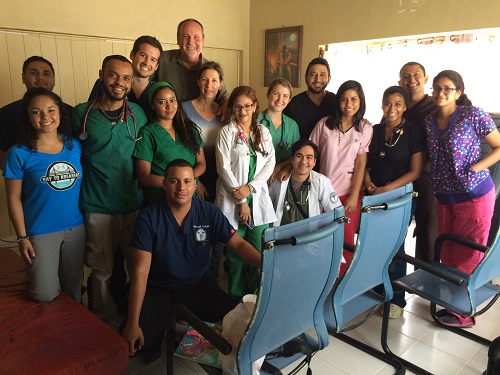
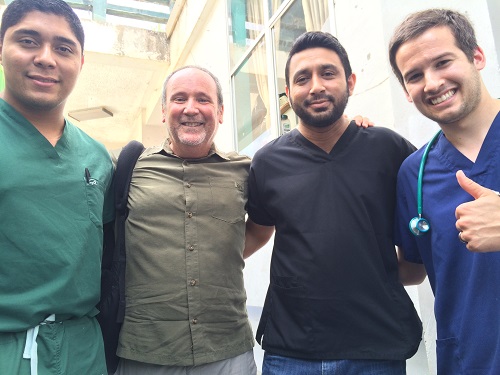
It was a day filled with times of sadness and times of inspiration. I know that Jesus is working all of it for good as I love him and seek his perspective. These experiences helped me to see the great need for better medical care in foreign nations and it also showed me a model for bringing about that change. I am thankful I am able to see these things so that I can seek the Lord for his heart for the nations as I start my residency training. I pray he will give me his heart of compassion and give me guidance and wisdom to make a difference in the world.
